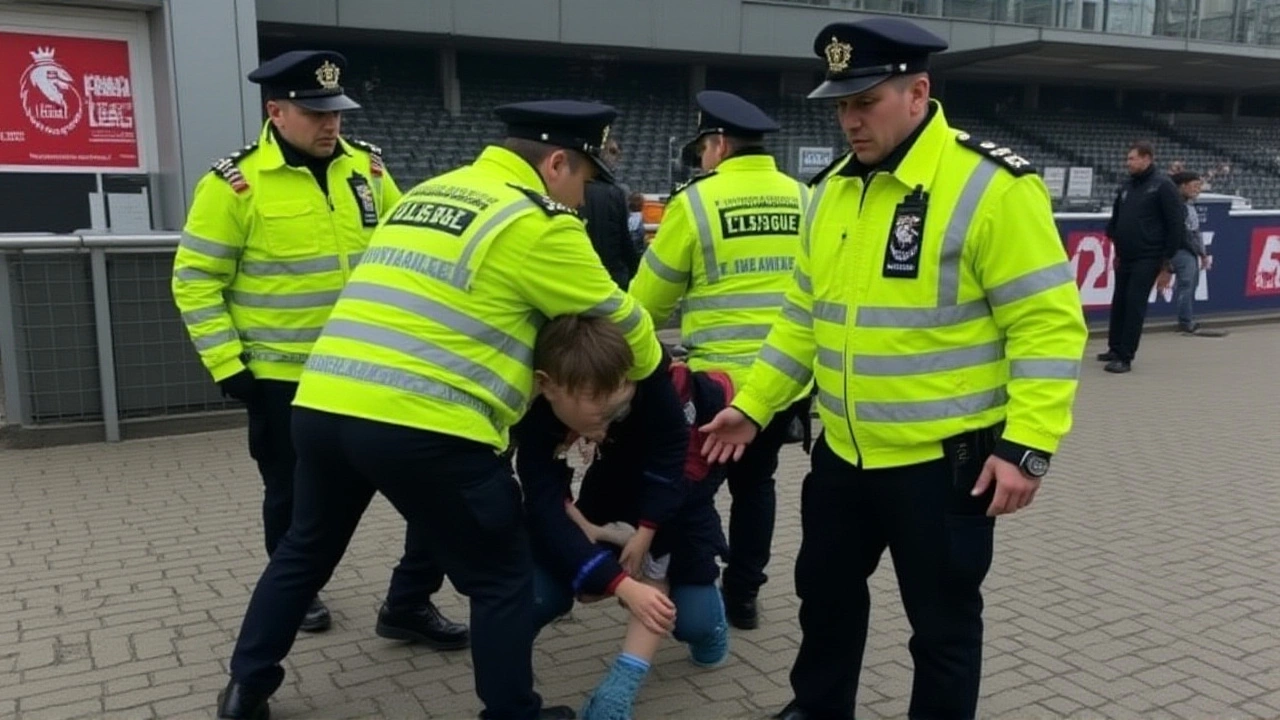What happened at Stamford Bridge
At around 2:30 pm on a bustling Saturday afternoon, tens of thousands of fans streamed out of Chelsea’s home ground after the Blues secured a 2‑0 triumph over local rivals Fulham. Amid the sea of scarves and chanting supporters, a teenage figure in full tactical gear caught the eye of uniformed officers stationed near the stadium’s main exit.
The youngster, aged 16, was dressed in a black ballistic helmet, body armor and a tactical vest that matched the look of Hunk, a fan‑favorite mercenary from the Resident Evil video‑game series. Slung across his back was a large bag, and a holster on his thigh held what appeared to be a handgun, while another large object protruded from the bag resembling a rifle.
Police officers, unarmed but trained for crowd‑control scenarios, sprinted toward the teen and ordered him to lie flat. The footage, widely shared on social media, shows the officers quickly disarming him, confiscating the handgun‑like replica and the rifle‑style prop. The weapons were later identified as imitation firearms that had originally been painted in bright colours but were later spray‑painted black to look more realistic.
After the encounter, the teenager was placed under arrest on suspicion of possessing imitation firearms in a public place. During the subsequent police interview, he explained that he had attended a nearby comic‑con that weekend and was still fully costumed when he headed toward the stadium. Officers released him after confirming the weapons were non‑functional replicas and no further charges were pursued.
Wider implications of realistic replica weapons
The episode shines a spotlight on the growing concern surrounding replica firearms that can easily be mistaken for real guns, especially in high‑traffic venues like football stadiums. Security teams at major sporting events already juggle multiple threats, from crowd unrest to potential terrorist attacks; a painted‑over replica can trigger an immediate, forceful response, as seen in this case.
Experts in public safety note that the line between cosplay accessories and dangerous props has blurred in recent years. While many costume enthusiasts argue for artistic freedom, authorities emphasise the need for clear visual differentiation—bright colours, orange tips or visible markings—to prevent misunderstandings. Some jurisdictions have introduced legislation that makes it illegal to alter replica guns to appear authentic, a move aimed at reducing panic and unnecessary police escalations.
For event organisers, the incident serves as a reminder to tighten entry checks and to communicate explicitly with attendees about prohibited items. At the same time, it raises the question of how police training can balance swift protection of the public with the rights of young costume‑wearers who pose no real threat.
Social media users quickly identified the costume as an accurate replica of Hunk’s gear, sparking debate about the responsibility of manufacturers who sell realistic prop weapons. Some retailers have responded by adding warning labels or refusing to sell items that can be easily modified to look lethal.
In the aftermath, Stamford Bridge’s security team issued a brief statement acknowledging the incident, stating that the police acted appropriately and that they would review their own policies regarding cosplay items in and around the stadium. The teenager, once released, returned to his family and reportedly plans to attend future events with clearly marked props to avoid any repeat of the situation.
The Stamford Bridge incident underscores a broader cultural clash: the enthusiasm of gaming and comic‑book fans versus the heightened security environment surrounding major public gatherings. As both sides navigate this uneasy terrain, the hope is for clearer guidelines that keep fans safe without stifling creative expression.
